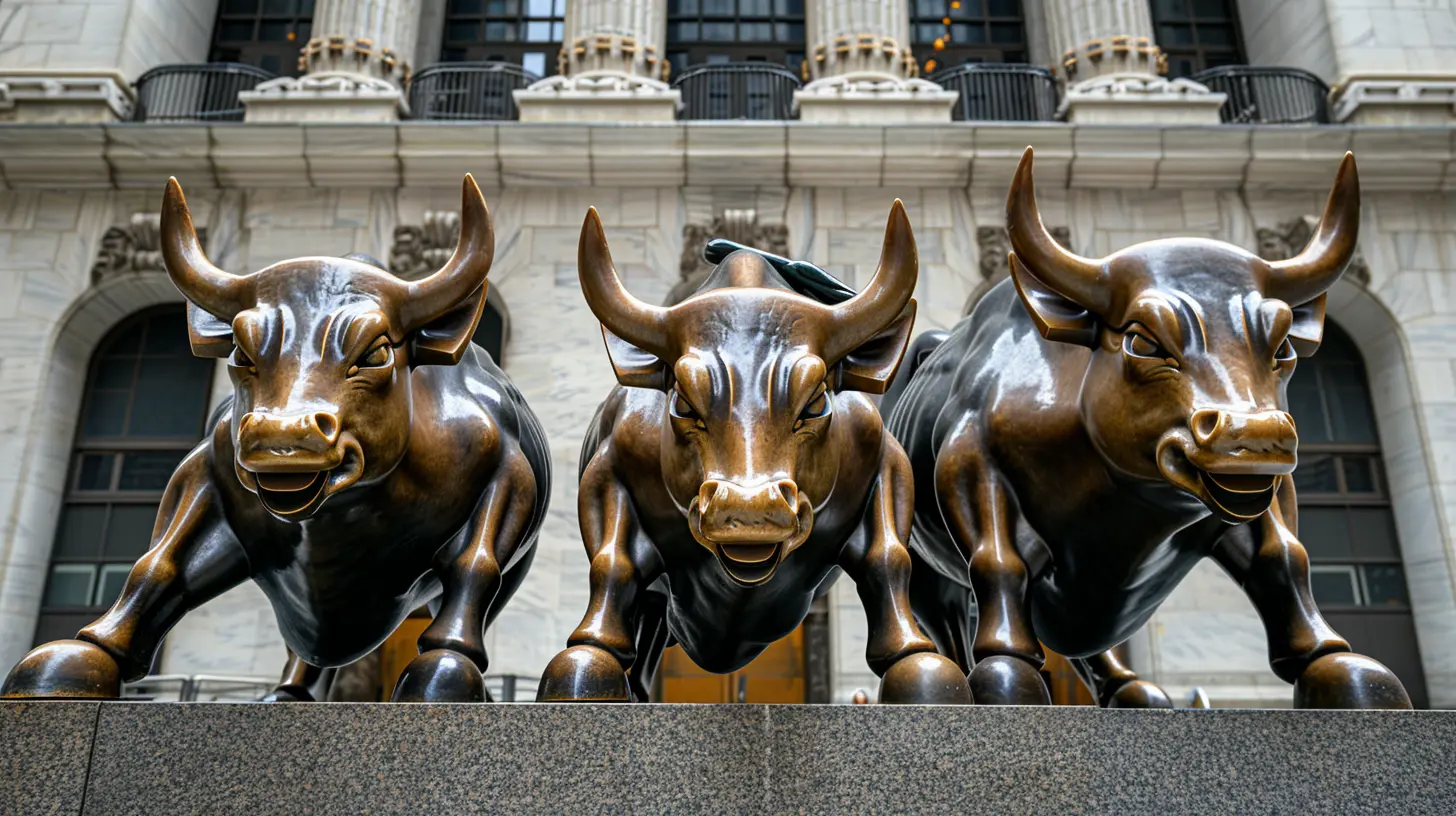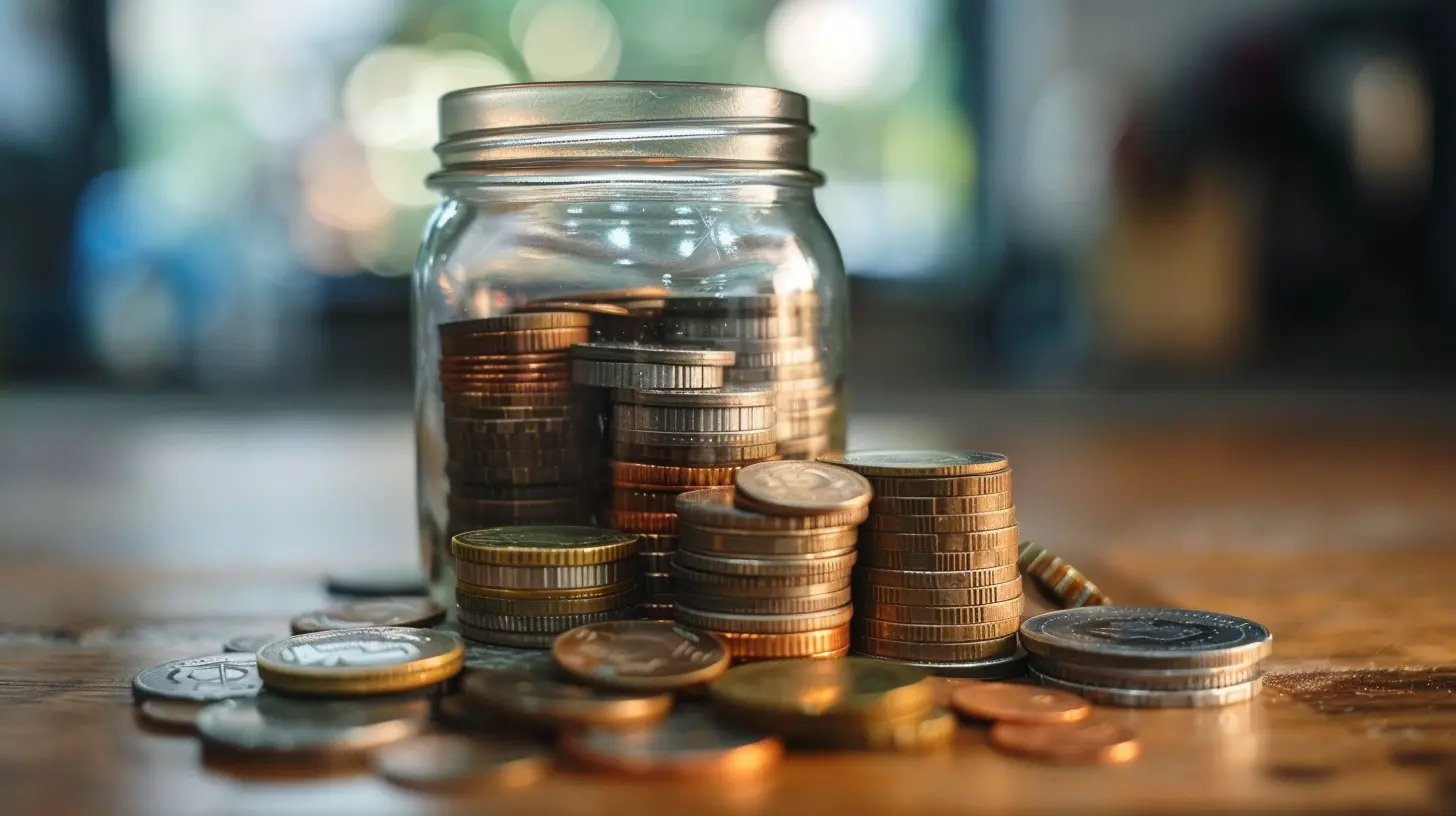How to Build a Recession-Proof Stock Portfolio
10 June 2025
Let’s face it: the word recession sends most of us running for the hills—or at least to our closets to check if there’s enough toilet paper and canned beans to last through the financial apocalypse. But guess what? The economy goes through cycles, like a moody teenager who can’t decide if they’re happy, angry, or just hungry.
Since we can’t stop recessions (unless you’ve got a magic wand or a direct line to the Federal Reserve), the smart move is to prep your investment portfolio so it's tough, resilient, and recession-proof—or at least recession-resistant. So buckle up, grab your favorite beverage, and let’s break down how to build a stock portfolio that can take a few punches and still stand tall.
🧱 What Does “Recession-Proof” Even Mean?
Before we go all-in on strategies and stock picks, let’s clarify what we mean by “recession-proof.”A recession-proof stock portfolio is like your grandma’s secret soup recipe: hearty, reliable, and capable of getting you through the worst of times. It’s designed to survive—and maybe even thrive—when the economy takes a nosedive.
That means:
- Minimal losses when markets drop
- Steady income through dividends
- A reasonable chance of gains when most things are crashing and burning
Think of it like building a fortress to protect your money from the wild economic dragons that occasionally rear their ugly heads 🐉.
🧠 The Psychology of Recessions: Keeping Your Cool When Everyone’s Panicking
Okay, quick reality check: during a recession, people freak out. Markets get volatile, news anchors start quoting doomsday stats, and your cousin Steve suddenly becomes a financial guru on Facebook.But here’s the truth bomb: panic is not a strategy. The smartest investors don’t try to time the market—they train themselves to ride the waves, not scream every time the boat rocks.
So, before we go into stock picks, let’s make sure your investor brain is wired for resilience:
- Accept that downturns are normal (just like gas prices mysteriously going up before every long weekend).
- Stay focused on long-term goals. Retirement? Early beach house? Whatever it is—don’t lose sight.
- Dollar-cost averaging is your friend. Buying regularly over time beats trying to guess the “perfect” moment.
Alright, feeling zen yet? Great. Let’s talk strategy.
💹 Diversification: The OG of Recession-Proofing
Imagine putting all your money into one hot stock, and then bam—it tanks. That’s like betting everything on one horse because it looked at you funny.Diversification is your first line of defense. It’s investing across different sectors and asset classes so if one area flops, another might float.
Here’s how to diversify like a boss:
- Mix between industries: Don’t just go all-in on tech. Add some consumer staples, healthcare, utilities, energy, and even a sprinkle of financials.- Go global: U.S. stocks are awesome, sure, but look beyond. Companies in other countries face different economic cycles.
- Include other assets: Bonds, real estate investment trusts (REITs), maybe even a lil’ gold (because who doesn’t want to be a bit of a dragon hoarder?).
Think of your portfolio like a buffet. You want a little of everything—so if one dish is bad, you're not going hungry.
🛑 Defensive Stocks: The MVPs During Market Mayhem
Defensive stocks are like that one friend who’s calm in a crisis, has duct tape in their glove box, and knows CPR. They don’t tend to blow up your portfolio with massive gains—but they also don’t fall apart when the economy turns sour.Top recession-friendly sectors:
1. Consumer Staples – People still need toilet paper, snacks, and toothpaste no matter what the economy’s doing.2. Healthcare – Medical needs don’t take a break during a recession. In fact, people get more stressed and probably need more meds.
3. Utilities – Unless people suddenly start living off-grid en masse (and good luck with that Wi-Fi), utility companies get paid.
Add some of these to your portfolio, and it’s like giving your money a crash helmet.
💰 Dividend Stocks: Because Cash Flow Feels Really Good in a Recession
Dividends are like getting paid to wait. And during a recession, that steady income feels like a warm blanket on a cold night.You want companies with:
- A strong history of paying AND increasing dividends
- Solid business models and financials
- Reasonable payout ratios (they’re not giving away every penny)
Think of dividend stocks as your portfolio’s part-time job—they keep the cash flowing even when prices are meh.
Some investor favorites? Johnson & Johnson, Procter & Gamble, and Coca-Cola. (Yes, people still drink soda when times are tough. Arguably, they drink more.)
🧠 Quality Over Hype: The Stocks That Weather Storms
Recession-proof means steering clear of hype stocks and meme madness. Instead, focus on quality companies—the ones with:- Strong balance sheets
- Low debt
- Consistent revenue
- Good leadership (not just tech bros with flame-throwing cars)
These are the tortoises, not the hares. Slow and steady, but when the dust settles, they’re still standing.
📉 Low Beta Stocks: Because Roller Coasters Are for Amusement Parks, Not Portfolios
In finance-speak, “beta” measures volatility. A beta of 1 = moves with the market. Less than 1 = less volatile. More than 1 = hold onto your lunch.During recessions, you’ll want lower-beta stocks. They move slower—both when things go up and down. But slow and boring ain’t bad when everything else is on fire.
Find companies that:
- Have a beta under 1
- Still have decent returns
- Tend to focus on needs over wants
Think: people won’t skip their electricity bill even if they cancel Netflix.
🏦 Consider ETFs and Index Funds: Lazy Genius Moves
Don’t want to pick individual stocks? That’s cool. Nobody said you had to be Warren Buffett (although if you are, hi!).Exchange-Traded Funds (ETFs) and index funds let you buy a whole slice of the market in one move. And yes, you can target defensive ETFs or those focused on dividends.
Some good ideas:
- Vanguard Dividend Appreciation ETF (VIG)
- Consumer Staples Select Sector SPDR Fund (XLP)
- iShares U.S. Healthcare ETF (IYH)
Just a few ETFs can give you broad exposure, solid dividends, and built-in diversification. They're the financial equivalent of a comfy pair of sweatpants.
🛡️ Bonds & Bond Funds: The Reliable Back-Up Singers
Stocks are the lead vocals, but bonds are the backup singers that hold the melody when things get shaky.During a recession, high-quality bonds (think U.S. Treasuries or strong corporate bonds) often perform better than stocks. They also offer relatively steady income.
You don’t have to go all-in, but a 20–40% allocation to bonds in a balanced portfolio isn’t unheard of—especially if you’re nearing retirement or just hate waking up to red in your portfolio.
🔁 Stay Consistent: Timing the Market is a Fool’s Game
Trying to predict when a recession will hit is basically a game of economic “Where’s Waldo?” You might get lucky—but most people don’t.Instead, stick to a smart strategy:
- Keep investing regularly (a.k.a. dollar-cost averaging)
- Rebalance your portfolio once or twice a year
- Don’t react to daily news—turn off the noise
You wouldn’t quit the gym because you didn’t see abs after one week, right? (And if you do, we need to talk.)
Same goes for investing. Stay in the game, follow the plan, and let compound interest do its magic.
🧙♂️ Bonus Tips from the Stock Market Sorcerer’s Scroll (Okay, Just Me)
- Keep some cash on hand – Not stashed in a sock, but in a high-yield savings account or money market fund. Cash = flexibility.- Avoid overleveraging – Debt amps up risk. Don’t bet the farm, especially in uncertain times.
- Review your goals annually – Your investing strategy should match where you’re going—not where you've been.
📊 Example of a Basic Recession-Proof Portfolio
Here’s a simple breakdown to get you started. (Disclaimer: not financial advice, just vibes.)| Asset Class | Allocation |
|-----------------------|------------|
| Defensive Stocks | 30% |
| Dividend Stocks | 25% |
| ETFs/Index Funds | 20% |
| Bonds/Bond Funds | 20% |
| Cash or Equivalents | 5% |
Tweak it based on your risk tolerance, age, and whether or not you think pineapple belongs on pizza.
🏁 Final Thoughts: Build It Before You Need It
Here’s the real secret of building a recession-proof stock portfolio: You have to do it when times are good, not when everything is on fire and you're panic-Googling “how to sell stocks without crying.”Start now. Diversify, safeguard, and invest with intention. Recession or not, your future self will thank you—and maybe even buy you a fancy coffee from all those dividends.
And remember, it’s not about being the smartest person in the room… it’s about being the calmest one when things go sideways.
all images in this post were generated using AI tools
Category:
Stock MarketAuthor:

Harlan Wallace
Discussion
rate this article
2 comments
Noah Sanders
Great insights! Building a recession-proof portfolio is essential for financial security. Your tips on diversification and risk management are incredibly valuable for investors right now.
June 11, 2025 at 12:12 PM

Harlan Wallace
Thank you! I’m glad you found the tips helpful for building a resilient portfolio. Your financial security is a top priority!
Levi McFarlane
Sure, just sprinkle some magic recession dust!
June 10, 2025 at 10:29 AM

Harlan Wallace
I wish it were that easy! While there's no magic solution, strategic planning can help mitigate risks.


